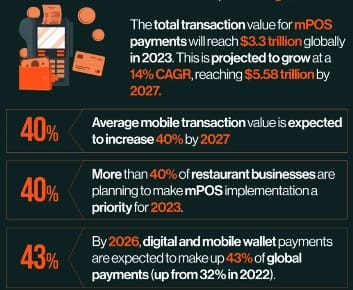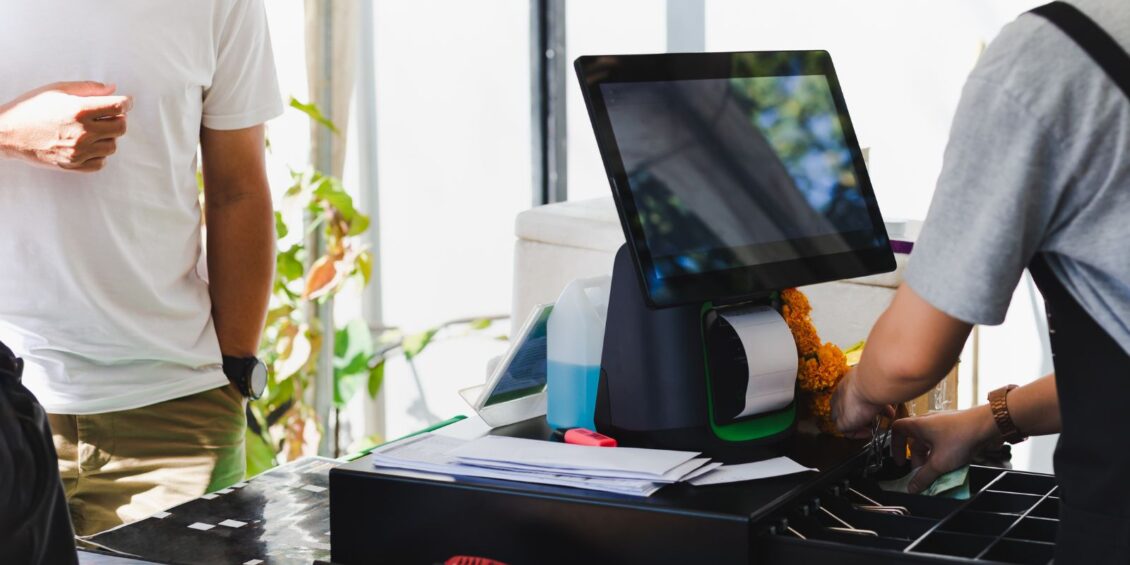In 2024, you have an important decision to make for your retail business: stick with POS (point of sale) in-store systems, or diversify your operations and leverage EPOS (electronic point of sale) software to drive customer engagement.
Both systems have their merits, yet they cater to slightly different types of businesses and customers. While the former represents the history of retail since the tail end of the 19th century, the latter has been a popular choice for many businesses since the turn of the 20th century.
In this guide we’ll take a look at the differences between both for retail businesses, so you can make an informed decision as to which system is best for your business.
What is a POS system?
A POS system is a term used to describe the hardware businesses use to manage customer transactions, process payments, and issue receipts.
Typically, you might associate a POS system with:
- A cash register
- A manual entry payment device
Think of anything that uses an analogue data entry system, like mechanical buttons or dials.
More often than not, the hardware for a POS system will be standalone – meaning it doesn’t offer integrations with other software solutions.
What is an EPOS System?
An EPOS system serves the same purpose as its predecessor, yet provides businesses with more versatility in how they take payments, handle transactions, and manage customer information.
While a POS system will usually be a physical device with a mechanical interface, an EPOS system could be:
- A tablet
- A mobile device
- A touchscreen terminal
- A barcode scanner
- A card reader
Given that EPOS systems offer digital interfaces, they can be used alongside other devices and software solutions, unlike POS systems. Mobile POS transactions alone are set to account for $3.76 trillion in 2024.


(Image Source: Go Globe)
Technology Integration
As you might imagine, there’s a lot more you can do with an EPOS system when it comes to technology integrations since POS systems are confined to standalone hardware devices.


(Image Source: Statista)
For example, you can access the cloud, giving you the ability to check on inventory and sales information in real time. The global POS software market is set to reach around $29.9 billion by 2032, reflecting a CAGR of 9.02% in a 10-year span from 2023.
There’s also the option to integrate an EPOS system with your current tech stack which might consist of a CRM to manage your customer information, a loyalty programme solution to offer rewards to customers, and accounting software to keep tabs on company finances.
86% of restaurants use POS data to inform their loyalty programmes and marketing campaigns.
Scalability
If you’re looking to scale your retail business, you’ll need a system that scales with you. With most POS systems, there are limitations that prevent you from scaling seamlessly – such as the lack of integration with other systems.
On the other hand, EPOS systems offer a flexible experience which can adapt to your business as you grow and scale over time. Many EPOS systems are customisable and work well alongside various technology solutions, so even if retail trends and technology changes, you can stay up to date.
Plus, on average, returning customers spend 67% more than new customers, so if they have a frictionless experience on their first interaction with your EPOS system, they’re more likely to become repeat customers.
User Experience
When choosing between POS and EPOS systems, it’s important to consider your employees, who are the people operating the machines.
With POS systems, there’s a steeper learning curve as there are likely less online resources available to aid with the instruction process and in general the hardware may be less intuitive to a tech-savvy employee.
EPOS systems instead offer more user-friendly interfaces, which should make staff training easier.
Costs and ROI
With POS systems, you have the initial cost of the hardware, but you also have to factor in ongoing costs. Maintenance can be an ongoing expense for machines like cash registers, which has to be accounted for when you opt for a POS system.
For EPOS systems, there’s more flexibility in how you pay for them. There may be subscription models at various monthly prices, and there will be lower maintenance costs due to how common the hardware has become.
Data Management
How you store and manage customer and sales data is critical to improving business performance in retail, and the approach will differ whether you’re using a POS or EPOS.
POS systems will often store data locally and provide limited options for analysing and interpreting the data you collect from customers. There’s a lot more manual work required with POS systems to extract valuable insights from your data.
EPOS systems give you access to cloud data storage, which means you can store and view all relevant data in real-time and use advanced analytics to get accurate trend predictions based on historical data.









Leave a Reply
View Comments